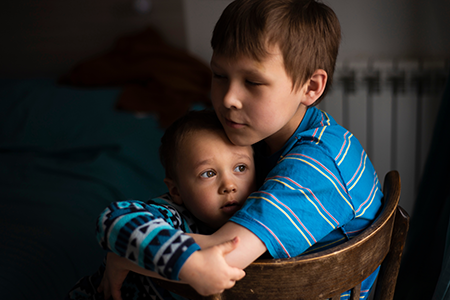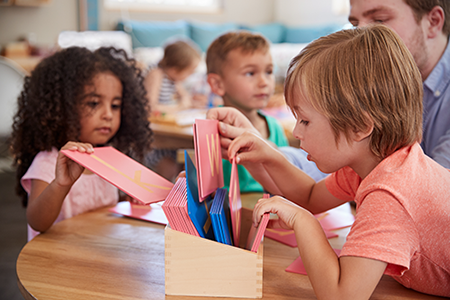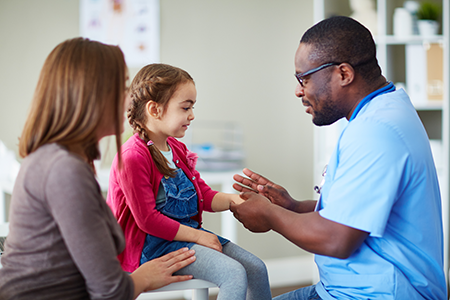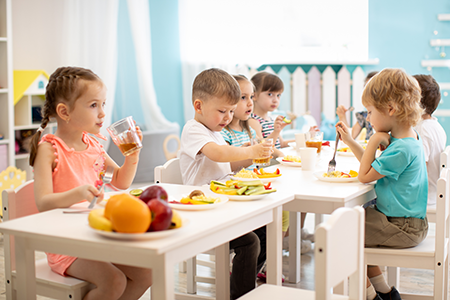The relative at-risk-of-poverty gap is an important indicator to quantify inequality within a society, as it measures how far the income of the median person at risk of poverty is from reaching the threshold.
In this case, the relative at-risk-of-poverty gap is calculated as the difference between the median equivalised net income of people at risk of poverty under 18 years old, and the at-risk-of-poverty threshold (also set at 60% of the national median equivalised disposable income). The difference between the median income of children at risk of poverty and the at-risk-of-poverty threshold is then expressed as a percentage, showing how much their income should increase to match the poverty line. A larger gap implies that the median disposable income of children at risk of poverty stands increasingly lower than the at-risk-of-poverty line.
The EU27 average for the relative median at-risk-of-poverty gap among children was 24.4% in 2022, rising to around a third of all children in Spain (31.8%) and Romania (33.1%), to the highest percentage of 42.8% found in Bulgaria. Finland, Hungary and Germany present the shortest distances between the median income of those at risk of poverty and the at-risk-of-poverty threshold: 12.3%, 14.5% and 16.8%, respectively.
Analysis over time of the relative median at-risk-of-poverty gap for children, 2015–2022
The EU27 average of this indicator for children markedly narrowed from 27.5% in 2015 to 25.5% in 2017, then fluctuated around 25.5% up to 2021. In 2022, the average among Member States was 24.4%. Hence, for the whole period, the average for the region saw a decrease of -3.1 percentage points. During the period 2015–2022, a reduction of disparities can be seen between Member States, apart from a slight rise in 2020 (to 26.5%), which is reflected in the decrease over time in the standard deviation. Therefore, upward convergence is recorded in the EU during this period.
Overall, the countries experiencing the largest increase in the at-risk-of-poverty gap were the Netherlands (+11.7 percentage points), Austria (+5.4 points) and Bulgaria (+5 points). On the other end of the scale, Romania (-10 percentage points), Greece (-9.6 points) and Latvia (-8.5 points) showed the best improvements for this indicator between 2015 and 2022: their relative distance between the median person at risk of poverty and the at-risk-of-poverty line remarkably diminished.
Several countries have experienced notable fluctuations over time. Bulgaria, which has mostly scored highest, reported a 37.8% relative distance in the income of children at risk of poverty from the at-risk-of-poverty threshold in 2015. It narrowed the gap below its average in 2021 at 33.7%, but widened to 42.8% in 2022, well above its average and a difference of 9.1 percentage points in only one year. Finland, which has scored lowest in most years, reported an at-risk-of-poverty gap of 11.3% in 2015, standing almost at its average for the whole period 2015–2022 (11.4%), although fluctuating around it by a few percentage points each year. Between 2020 and 2021, the relative median at-risk-of-poverty gap for children in Finland dropped below 10% but widened to 12.3% in 2022.
Explore the data
 The Recommendation establishing a European Child Guarantee aims to prevent and combat social exclusion by guaranteeing access of children in need to a set of key services. The analysis presented here covers the share of children at risk of poverty or social exclusion, the at-risk-of-poverty rate for children, the rate of severe material and social deprivation among children. It also covers children living in a household with very low work intensity, the at-risk-of-poverty gap, the share of children with limitations due to health problems and the number of children in alternative care including residential care.
The Recommendation establishing a European Child Guarantee aims to prevent and combat social exclusion by guaranteeing access of children in need to a set of key services. The analysis presented here covers the share of children at risk of poverty or social exclusion, the at-risk-of-poverty rate for children, the rate of severe material and social deprivation among children. It also covers children living in a household with very low work intensity, the at-risk-of-poverty gap, the share of children with limitations due to health problems and the number of children in alternative care including residential care. 




